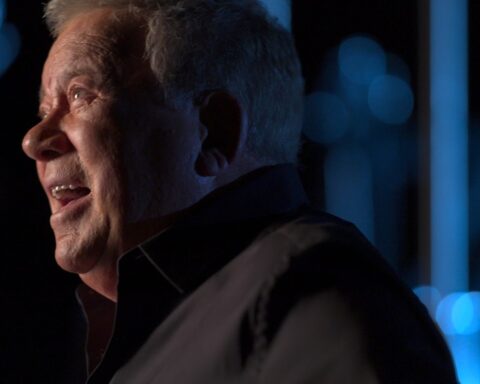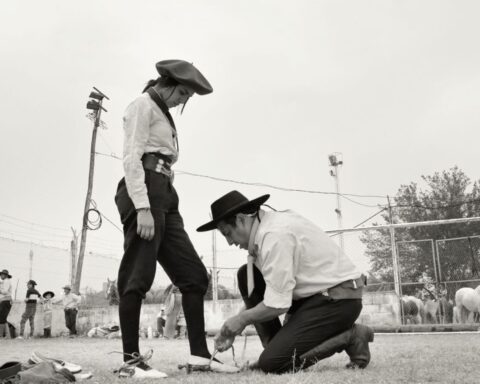The Image Book
(Switzerland/France, 84 min.)
Dir. Jean-Luc Godard
Programme: Masters (North American Premiere)
Godard has never been in doubt of his own genius, but at some point he left the rest of us behind. There are differences of opinion as to when that happened: Was it after Weekend (1967)? Was it in his “return to narrative” in the late 1970s after his political adventures with the Dziga-Vertov Group? Was it in the late 1980s when those narrative experiments turned out notorious duds like King Lear (1987)?
Either way, there seems to be a rough consensus that at least from 1990’s Nouvelle vague onwards Godard reached a renewed peak that continued all the way through 2010’s Film Socialisme and 2014’s Adieu au langage. The works difficulties haven’t seemed to preclude praise. And from Histoire(s) du cinema through Notre musique, I’m right there with everyone else—I think it’s quite as good as his first mature period from around 1965 to ’67. By and large I’ve never gotten much out of the 1980s stuff; the early ’60s Nouvelle Vague films mostly look quaint in light of what was to come and the Dziga-Vertov Group stuff is pretty embarrassing. But the two peaks of the mid-’60s and roughly from ’98 to ’04 contain some of my favourite films of all time.
That’s where I’m coming from when I say that The Image Book is absolutely, nails-on-a-chalkboard, buffering-video, interminable-lecture terrible. Maybe true Godard acolytes will get more out of it. Hell, I’ve only seen thirty of his films, who am I to talk? I probably only caught 1/3 or less of the hundreds of references in The Image Book, a list of which is generously offered at the credits, which I would call the end credits except the film ungenerously continues for several pointless minutes more.
To me, it’s as though Histoire(s) du cinema were chopped up into a million pieces and rearranged at random with maybe three-quarters of them removed for good measure. There are all the same references to cinema (much of it Godard’s own), classic literature and art, politics and war. And there are all the same abrasive techniques he’s been pioneering since the 1960s. I feel obliged to mention that his most apparent innovation this time around, which comes on top of the constant allusions to stuff you haven’t seen or read or heard of, interruptions of scenes by extreme violence, on-screen text, repetitive use of music, mismatched and incomplete subtitles, and so on, which are all basically de rigueur at this point, is reframing images from one aspect ratio to another. It is neither brilliant nor annoying. It’s fine.
If you want a generous and, I’m sure, brilliant reading of the film, Andréa Picard’s piece on it for Cinema-Scope is readily available. And maybe if I were to familiarize myself with the entirety of the film’s index and rewatch it a half-dozen times, I’d get there. But for now, all I can say is that I felt trolled, which was funny maybe 1/10 of the time, irritating another 1/10 of the time, and mostly just boring. There are better versions of this kind of theory- and technology-damaged art made every day as memes posted on Facebook and Instagram.
Visit the POV TIFF Hub for more coverage from this year’s festival.










